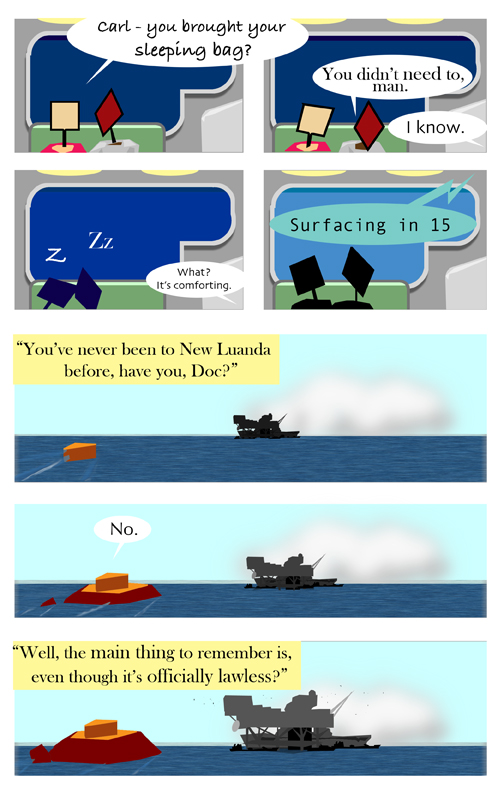Ladies and gentlemen, start your engines – nothing tends to rile science fiction folk so much as folk from outside the ghetto loudly pronouncing that OMFG UR DOIN IT RONG, and this piece by Dr Sam Vaknin should provide great fodder for some hard sf advocacy and righteous ire. So fetch your popcorn, kids, as we find out the ten hidden and fallacious assumptions about extraterrestrials in science fiction!
In all works of science fiction, there are ten hidden assumptions regarding alien races. None of these assumptions is a necessity. None of them makes immanent or inevitable sense. Yet, when we read a sci-fi novel or watch a sci-fi movie we tend to accept all of them as inescapable. They amount to a frame of reference and to a language without which we seem to be unable to relate to all manner of exobiology. We evidently believe that life on Earth is a representative sample and that we can extrapolate its properties and mechanisms of action wide and far across the Universe. The principles of symmetry, isotropy, and homogeneity apply to the physical cosmos: Hydrogen behaves identically in our local galactic neighbourhood as it does in the furthest reaches of the Cosmos. Why shouldn’t life be the same?
“In all works of science fiction”? Vaknin must have a whole lot of reading time on his hands…
Snark aside, Vaknin’s major FAIL here is the classic outsider’s misconception of sf, namely that it’s supposed to be taken literally rather than allegorically*. In other words, he’s quite right in that sf makes assumptions about alien life, but quite wrong in thinking that it matters to sf’s function as a form of entertainment**. Put it this way: if you read science fiction for the pleasure (rather than as a stand-in for a doctorate in exobiology, say), I’d guess there’s a 95% chance Vaknin’s article is a classic case of TL;DR. SETI geeks with time on their hands may get a kick from it, though.
Anyway, George Dvorsky takes Vaknin at something closer to face value than I have the time, expertise or motivation to pull off, and manages to do a pretty good job of popping his tyres:
Sure, I agree that ETIs may be dramatically different than what we can imagine and that they may exist outside of expected paradigms, but until our exoscience matures we should probably err on the side of the self-sampling assumption and figure that the ignition and evolution of life tends to follow a similar path to the one taken on Earth. Now, I’m not suggesting that we refrain from hypothesizing about radically different existence-states; I’m just saying that these sorts of extraordinary claims (like alternative intelligences spawning different quantum realities) require the requisite evidence. It’s far too easy to fantasize about some kind of energy-based hive-mind living in the core of asteroids, it’s another thing to prove that such a thing could come about through the laws of physics [my example, not Vaknin’s].
[…]
Nice try, Vaknin, but the Great Silence problem is more complex than what you’ve laid out.
For all my bitching above, I do actually find things like the Fermi Paradox and the Great Silence to be lots of fun to think about. If you’re looking for an accessible introduction to the idea (and some of the hypotheses presented as solutions), Dvorsky’s blog is a good place to start… but I’d also recommend the book Where Is Everybody? by Stephen Webb, which is full of great starter seeds for Baxterian space opera stories.
[ * Yeah, yeah, hard sf is driven by scientific rigour and plausibility, sure, but it’s still stories told by humans about what it’s like – or may at some point in the future be like – to be a human in a big confusing universe; even Watts’ Blindsight speaks to the human condition and the state of our understanding of life in the universe more than it does the raw facts we have regarding life in the universe, and that’s about as hard an sf novel as I’ve ever read. You can argue that rigidly hard sf (factual to the detriment of story) is the apogee of the genre if you like, but you’d be wrong. ]
[ ** An essay deconstructing the false assumptions made about gender and race in science fiction, however, would be something worth writing, because humans are the true subject of human literature, even when they’re not the subject that takes the limelight on center stage. False assumptions about people need taking apart far more urgently than false assumptions about hypothetical beings we may never meet, IMHO. ]


